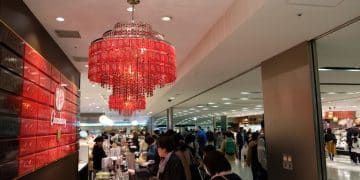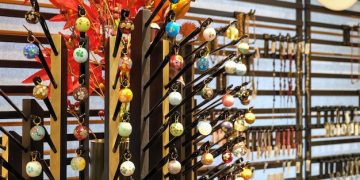Navigating Japanese Department Store Sales: Your Guide to Unbeatable Deals
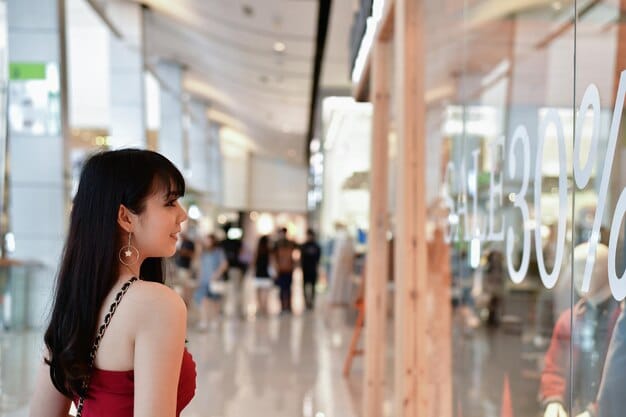
Successful navigation of Japanese department store sales involves understanding seasonal timing, decoding discount structures, and leveraging savvy shopping strategies to secure the best deals before popular items are gone.
For visitors and residents in Japan, the allure of department stores offering premium goods often comes with a premium price tag. However, the secret to unlocking incredible value lies in mastering the art of Navigating Japanese Department Store Sales: How to Snag the Best Deals Before They’re Gone. This guide will equip you with the essential knowledge and strategies to transform your shopping experience into a treasure hunt for exceptional finds.
Understanding the rhythm of Japanese department store sales
Japanese department stores operate on a predictable schedule when it comes to their sales. While seemingly complex at first, understanding these patterns is your first step towards becoming a savvy shopper. These sales are not random events; they are meticulously planned campaigns designed to move inventory and attract eager consumers. It’s an intricate dance between tradition and commercial strategy, often tied closely to national holidays, seasonal shifts, and the academic calendar.
The rhythm of sales often begins subtly, building momentum towards peak periods. Think of it as a crescendo, starting with minor promotions and escalating into grand, store-wide events. This phased approach allows shoppers to plan their purchases strategically, deciding whether to buy an item at an early, modest discount or to hold out for a deeper markdown, risking the item selling out. This strategic patience is a hallmark of success for those navigating the sale landscape.
Key sales seasons and holidays
Knowing when to expect major sales is crucial. Japan’s retail calendar is punctuated by several significant sales periods:
- 🇯🇵 New Year (Hatsu-uri) and Winter Sales: Kicking off right after January 1st, this is arguably the biggest and most anticipated sale period. Department stores open early, often with long lines, for the legendary fukubukuro (lucky bags) and deep discounts on winter apparel.
- 🌸 Spring/Golden Week Sales: As winter gives way to spring, around April and May, you’ll find sales particularly around Golden Week, focusing on spring collections and preparing for summer.
- ☀️ Summer Sales (End of June to August): The second major sales season, offering significant discounts on summer fashion, home goods, and electronics as stores prepare for autumn inventory.
Seasonal clearance strategies
Beyond the major holidays, department stores continuously clear out seasonal stock. This is where strategic timing comes into play. For instance, winter clothing often goes on sale in January and February, but the deepest discounts might appear towards the end of February as stores try to make space for spring arrivals. Similarly, summer items see their steepest price drops in mid to late August.
Navigating these clearance sales requires a keen eye and a bit of patience. Products that didn’t sell well during the peak season are often grouped together with significant markdowns. This is the prime opportunity to find high-quality items at a fraction of their original cost. However, sizes and popular styles may be limited. Always check for returns policies and final sale disclaimers during these deep clearance events. Understanding this seasonal ebb and flow is fundamental to securing deals before they vanish.
Decoding department store discount structures
Once you’ve identified the opportune times to shop, the next challenge is understanding how Japanese department stores apply their discounts. It’s rarely a flat percentage off everything. Instead, they employ a nuanced system involving tiered discounts, special promotions, and unique sale mechanics. Knowing these structures allows you to anticipate pricing and gauge the true value of a deal. This often involves looking beyond the initial percentage off and considering the store card benefits or tax-free options for tourists.
The visual cues in a Japanese department store during a sale are informative. Red signs, banners proclaiming “Sale” or “Bargain,” and clearly marked price tags with both original and discounted prices are common. However, the deeper nuances come from understanding the “why” behind the pricing strategies. Is it an end-of-season clearance? A specific brand promotion? Or a loyalty member exclusive? Each scenario dictates a different approach to maximizing savings.
Tiered discounts and loyalty programs
Many sales begin with a moderate discount, perhaps 10-20% off. As the sale progresses, or new stock arrives for the next season, prices drop further. You might see items move from “20% off” to “30% off” to “final clearance 50% off or more.”
Beyond blanket reductions, loyalty programs are a significant avenue for savings:
- 💎 Department Store Credit Cards: Most major department stores (e.g., Isetan, Mitsukoshi, Takashimaya, Daimaru) offer their own credit cards. These cards often come with exclusive member discounts, points accumulation (which can be converted to cash or store credit), and early access to sales.
- 🏆 Member-Specific Sales: Loyalty members often receive invitations to pre-sales or exclusive sale events before they are opened to the general public. This gives cardholders first dibs on popular items and sizes.
Tax-free shopping for tourists
For international visitors, tax-free shopping is a significant benefit that stacks with sales discounts. Most large department stores facilitate tax refunds for eligible purchases (generally over 5,000 JPY excluding tax, for consumables or general goods).
Here’s how to maximize this:
- 🧾 Combine Discounts with Tax Exemption: Always ask if your discounted purchase qualifies for tax exemption. The 10% consumption tax refund on top of a sale price can lead to substantial savings.
- 📝 Designated Tax-Free Counters: Department stores typically have dedicated tax-free counters where you present your passport, receipts, and purchased items to claim your refund.
- 🛃 Understand Eligibility: Be aware of the rules; items purchased under tax exemption are generally intended for use outside Japan and must be taken out of the country.
Understanding these layered discount systems ensures you’re not just shopping the sale, but truly optimizing your expenditure. It’s about combining immediate markdowns with long-term loyalty benefits and tax advantages to achieve maximum value.
Essential strategies for successful sale shopping
With an understanding of when and how department store sales work, the next step is developing a robust strategy for tackling them effectively. It’s not just about showing up; it’s about being prepared, focused, and adaptable. From pre-sale reconnaissance to navigating crowded floors, each element plays a role in securing those coveted deals. A well-executed strategy can mean the difference between leaving empty-handed and walking away with significant savings on desired items.
The environment of a major Japanese department store sale can be overwhelming. Crowds, rapidly emptying shelves, and the sheer volume of choices demand a clear mind and a precise plan. Successful sale shoppers aren’t just lucky; they are methodical, patient, and quick to act when the right opportunity arises. This involves a blend of pre-planning, in-the-moment decision-making, and effective crowd management.
Pre-sale reconnaissance: your secret weapon
The most successful sale shoppers start long before the actual sale day.
This “reconnaissance mission” involves:
- 🕵️ Familiarize Yourself with Inventory: Visit the department store a few weeks before an anticipated sale. Note down items you’re interested in, their original prices, and their exact locations. This helps you quickly locate them when the sale hits.
- 📡 Monitor Online Announcements: Follow your favorite department stores or brands on their websites, social media, or through newsletters. They often announce upcoming sales, new arrivals, and special promotions.
- 📝 Create a Wishlist: Having a clear list of what you’re looking for prevents impulse buys and keeps you focused amidst the sale frenzy. Prioritize items you truly need or have been eyeing.
Timing your visit: early bird or late bloomer?
There are pros and cons to both approaches:
- 🌅 Opening Hours (Early Bird): For highly anticipated items, limited edition goods, or popular sizes, arriving at opening or even slightly before is crucial. This is especially true for fukubukuro. You get the best selection, but also the biggest crowds.
- ⏳ Late in the Sale Period (Late Bloomer): If your priority is maximum discount rather than specific items or sizes, shopping towards the end of a sale period, particularly for seasonal clearance, yields the steepest price drops. However, selection will be significantly dwindled.
A balanced approach might be to visit early for must-have items and then return later for browsing and deeper clearance finds.
Navigating crowded floors and fitting rooms
Department store sales can be a sensory overload.
Maintain your sanity and efficiency with these tips:
- 🚶♂️ Move Purposefully: Stick to your wishlist. Avoid getting sidetracked by unrelated displays unless you’ve secured your priority items.
- 🧥 Dress for Success: Wear comfortable shoes and minimalistic clothing that’s easy to take on and off for fitting rooms.
- 🛍️ Strategic Baggage: Bring a reusable shopping bag. Department stores provide bags, but having your own can be convenient for smaller items and reduces waste.
- 🧼 Consider Off-Peak Hours: If possible, visit during weekdays, particularly mid-morning or mid-afternoon, to avoid the weekend rush.
By implementing these strategies, you’ll transform from a casual browser into an effective, deal-snagging machine. Success in a Japanese department store sale is less about luck and more about preparation and smart execution.
Beyond the sale: maximizing value and post-purchase tips
Securing a great deal doesn’t always end at the checkout counter. Savvy shoppers understand that true value optimization extends to post-purchase considerations and making the most of every yen spent. From return policies to leveraging after-sale services, there are additional layers to consider that enhance the overall shopping experience and ensure satisfaction long after the initial purchase. This includes ensuring proper care for delicate items, understanding warranty details, and even identifying opportunities for future savings.
Japanese retail is renowned for its high standards of customer service, and this often extends to their post-purchase support. While general sale items might have stricter return policies, understanding what is and isn’t permitted can prevent future frustration. Furthermore, maintaining the quality of your purchases ensures their longevity, further increasing their value over time.
Understanding return and exchange policies
While Japanese department stores generally have excellent customer service, their return policies, especially for sale items, can be stricter than those in some Western countries.
Key points to remember:
- 🚫 Final Sale: Many deeply discounted items, particularly during final clearance periods, are marked as “final sale,” meaning no returns or exchanges. Always check the tag or ask staff.
- 📅 Time Limits: For eligible returns, there’s usually a strict time limit (e.g., 7-14 days).
- 🏷️ Original Condition: Items must be in their original condition, with all tags attached, and accompanied by the original receipt.
- 🔄 Exchange vs. Refund: Some stores might offer exchanges or store credit instead of full refunds for sale items.
Always clarify the return policy before making a significant purchase, especially if you have any doubts.
Leveraging department store gift wrapping and services
Japanese department stores are famous for their exquisite gift-wrapping. Even if you’re buying for yourself, consider these services for special items:
- 🎁 Impeccable Presentation: If you’re purchasing a gift, the wrapping service is often unparalleled and can elevate even a sale item into a luxurious present. Some services might be free, others might incur a small fee.
- ✨ After-Sales Services: For higher-value items like electronics or luxury goods, inquire about warranties, repair services, or specific care instructions. Department stores often provide excellent support in these areas.
Proper care for your sales finds
To truly maximize the value of your discounted purchases, proper care is essential.
- 🧺 Read Care Labels: Especially for clothing bought on sale, always check the care labels carefully. Japanese textiles often have specific washing or dry-cleaning instructions.
- 🛠️ Handle with Care: For delicate items, electronics, or glassware, ensure you understand how to use and maintain them correctly to extend their lifespan.
- 📦 Storage: Store out-of-season items properly to prevent damage and maintain their condition for years to come.
The true value of a sale item isn’t just its low price, but also its longevity and how well it continues to serve its purpose. By understanding post-purchase options and caring for your acquisitions, you secure enduring value from your savvy sale shopping exploits.
Beyond fashion and luxury: diverse offerings in Japanese department store sales
While fashion and cosmetics are often the first things that come to mind when considering department store sales, the reality is far broader. Japanese department stores are veritable treasure troves, offering a vast array of goods. Their sales extend beyond just clothing and accessories, encompassing everything from gourmet foods to household goods, and even unique artisanal crafts. This diverse offering means there’s almost always something on sale that caters to a wide range of interests and needs, making every visit a potential discovery.
The breadth of categories on sale often surprises first-time visitors. These aren’t just clothing racks; they are entire floors dedicated to home furnishings, exquisite kitchenware, traditional Japanese crafts, and even high-quality stationery. Each of these departments participates in the seasonal sales, providing opportunities to acquire beautifully designed and functional items at reduced prices.
Gourmet food halls (depachika) and sales
The basement food halls (depachika) are a highlight of Japanese department stores. While not typically “sale” items in the traditional sense, there are still ways to find deals:
- 🍣 End-of-Day Discounts: As closing time approaches, many fresh food counters (sushi, bentos, prepared deli items) offer significant discounts to clear inventory before the end of the day. This is a fantastic way to enjoy high-quality Japanese cuisine at a fraction of the cost.
- 🍰 Seasonal Specialties: Look for limited-time offers on seasonal fruits, exquisite pastries, or specialty ingredients that might be nearing their peak freshness but are still of premium quality.
These aren’t often advertised as “sales” but rather as “time sales” or “freshness discounts.”
Household goods and interior design
Beyond apparel, department stores offer extensive collections of home goods, kitchenware, and interior decorations.
Sale opportunities here include:
- 🍽️ Tableware and Ceramics: High-quality Japanese ceramics, glassware, and cutlery often go on sale, especially during mid-season changes or when new designs are introduced.
- 🛋️ Linen and Bedding: Look for discounts on premium Japanese towels, bed linens, and bath accessories, which are known for their quality and durability.
- 🗄️ Small Appliances: Sometimes, new model releases for kitchen appliances or personal care items (e.g., hair dryers, multi-cookers) prompt sales on previous models.
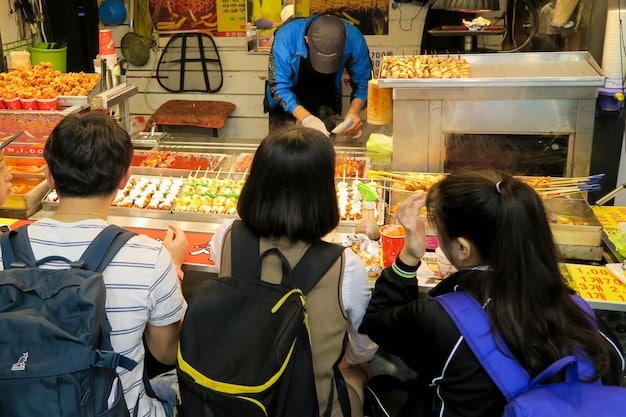
Stationery, art supplies, and traditional crafts
For those with interests in crafts, art, or fine stationery, department stores offer surprising discounts:
- ✍️ High-Quality Stationery: Discounts on premium notebooks, pens, and organizational tools can pop up, especially during back-to-school periods or year-end clearances.
- 🎨 Art and Craft Supplies: Specialized art materials, from paints to unique papers, might be included in sales, catering to specific hobbies.
- 🎎 Traditional Japanese Crafts: While often high-value items, traditional crafts like lacquerware, carefully chosen kimonos, or exquisite fans may see reductions, particularly if they are last season’s designs or part of a store-wide clearance.
By exploring every floor and department, shoppers can uncover a wide array of deals far beyond just the latest fashion trends, making the sales experience truly comprehensive and rewarding. This diversified approach to sale shopping enhances the overall thrill of discovery.
Online vs. in-store: where to find the best deals?
In the fast-evolving retail landscape, the traditional in-store department store sale now competes with an increasingly sophisticated online presence. Deciding where to focus your attention—physical stores or their digital counterparts—can significantly impact your ability to snag the best deals. Each channel offers distinct advantages and disadvantages, making a hybrid approach often the most effective. Understanding these differences is key to optimizing your sale shopping strategy and ensuring you don’t miss out on opportunities, whether from the comfort of your home or amidst the bustling energy of a Tokyo Ginza department store floor.
The convenience of online shopping is undeniable, but the tactile experience and immediate gratification of in-store purchases still hold strong appeal. Japanese department stores have invested heavily in both, recognizing the diverse preferences of their customer base. Consequently, sales strategies often differ between the two platforms, with unique promotions, inventory, and timing for each.
The allure of in-store sales: advantages and realities
Shopping in a physical department store during a sale offers several unique benefits:
- ✨ Tactile Experience: You can see, touch, and try on items directly. This is crucial for apparel, cosmetics, and assessing the quality of homeware.
- 🛒 Immediate Gratification: You leave with your purchases immediately, without waiting for shipping.
- 🗣️ Personalized Service: Department store staff in Japan are renowned for their attentive service. They can offer advice, locate items, and help with tax-free procedures.
- 🎀 “Lucky Bags” (Fukubukuro): These iconic New Year’s sale items are almost exclusively sold in-store, creating a unique, exciting shopping experience.
However, in-store sales come with the reality of crowds, potential queues, and limited stock of popular items. It requires patience and a strategic approach.
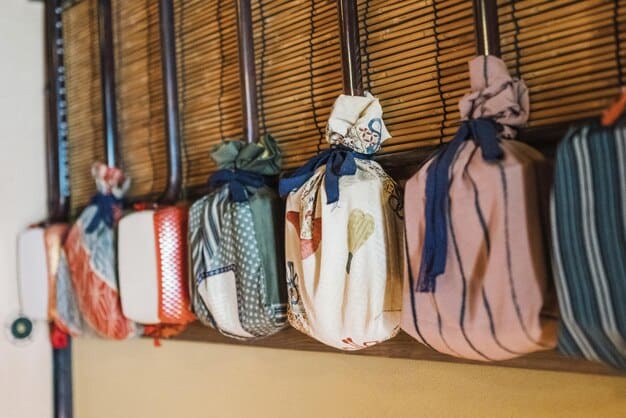
Online sales: convenience and exclusive access
Department stores in Japan have robust online platforms, often with their own sale events.
Advantages of shopping online include:
- 💻 Convenience: Shop from anywhere, anytime, avoiding crowds and travel time.
- 🚚 Wider Selection (Potentially): Online inventories can sometimes be larger than what’s displayed in a single physical store, drawing from centralized warehouses.
- 💨 Flash Sales and Online Exclusives: Many online stores offer limited-time “flash sales” or products only available online, which can offer deeper discounts.
- 🔔 Early Access: Signed-up members often receive email notifications about upcoming online sales, sometimes even granting early access before the public.
The downside can be shipping costs (though often free above a certain spend), the inability to physically inspect items, and the need to wait for delivery. Items may also sell out very quickly online, requiring fast action.
The hybrid approach: best of both worlds
For the ultimate sale shopping experience, a hybrid approach is often best:
- 🛍️ In-Store for “Must-Haves”: Prioritize visiting physical stores for critical purchases where you need to check size, fit, or quality (e.g., clothing, high-end cosmetics).
- 🌐 Online for “Nice-to-Haves” and Deals: Use online platforms for items where physical inspection is less critical, or to snap up flash deals and online exclusives that might not be available in-store.
- 🔍 Online Window Shopping/Research: Browse online before heading to the physical store. This allows you to check availability, compare prices, and plan your route.
By strategically combining both online and in-store shopping, you maximize your chances of securing the best deals on a wider range of items, leveraging the unique strengths of each channel.
Common pitfalls to avoid during department store sales
Even with the best intentions and thorough preparation, navigating department store sales can be fraught with common pitfalls that undermine your savings and satisfaction. These aren’t always obvious traps; sometimes they are subtle psychological lures or simply oversights born from the excitement of the hunt. Recognizing and actively avoiding these mistakes is just as crucial as knowing the best strategies for finding deals. A truly savvy shopper learns not only what to do but also what not to do.
The atmosphere of a sale—the urgency, the perceived scarcity, the competitive energy—can cloud judgment. Impulse buys, overlooking critical details, or simply becoming overwhelmed are all common issues. By maintaining a clear head and adhering to a few preventative measures, you can ensure your sale shopping remains a rewarding and efficient endeavor, free from buyer’s remorse.
Impulse buying and the “sale illusion”
The most common pitfall is falling victim to impulse buying.
- 💸 Beware the “Bargain” Trap: Just because something is on sale doesn’t mean it’s a good deal for *you*. Ask yourself if you would buy the item at its full price if you genuinely needed it. If not, it might be an impulse purchase.
- ✨ The “Sale Illusion”: The excitement of a sale can make items seem more desirable than they are. Stick to your wishlist and pre-sale reconnaissance. If an item wasn’t on your radar before the sale, think twice about buying it unless it truly meets an existing need or desire.
- 💭 Consider Longevity: Will this item serve you well for a long time, or is it a fleeting trend? Investing in quality items, even if slightly more expensive on sale, often provides better long-term value than cheap, low-quality impulse buys.
Overlooking return policies and final sale restrictions
As mentioned, Japanese return policies can be stringent, especially during sales.
To avoid disappointment:
- 🔍 Read the Fine Print: Always check the signs near the item, the price tag, or ask a sales associate about the return and exchange policy BEFORE purchase.
- ❌ “No Refunds, No Exchanges”: Assume that deeply discounted sale items might be final sale unless explicitly stated otherwise. If you’re unsure about sizing or fit, it’s safer to pass on “final sale” items.
Forgetting the tax-free opportunity
For international visitors, forgetting to claim the tax refund is a missed opportunity for significant savings.
- 🛂 Keep Your Passport Handy: You need your physical passport (not a copy or photo) to claim tax exemption.
- ⏱️ Allocate Time: The tax-free counter can have lines, particularly during peak sale periods. Factor this into your shopping schedule.
- ⚖️ Minimum Spend: Remember the minimum spend requirement (usually 5,000 JPY excluding tax per category of goods – consumables vs. general goods). Keep track of your purchases.
By proactively addressing these common pitfalls, shoppers can enhance their success rate during department store sales, ensuring that their efforts truly lead to valuable acquisitions rather than regrets. Informed decisions are the cornerstone of smart shopping.
| Key Point | Brief Description |
|---|---|
| 🗓️ Sale Season Timing | Major sales occur during New Year (Hatsu-uri) and Summer (June-August). Seasonal clearances offer deeper discounts later. |
| 💰 Discount Decoding | Understand tiered discounts, loyalty programs, and combine with tax-free shopping for maximum savings. |
| 🎯 Pre-Sale Strategy | Conduct reconnaissance, create a wishlist, and monitor online announcements for early access or preferred items. |
| 🚫 Avoid Pitfalls | Beware of impulse buying, always check return policies, and remember to claim tax refunds for eligible purchases. |
Frequently asked questions about Japanese department store sales
The prime times are immediately after New Year’s Day (early to mid-January) for the “Hatsu-uri” sales and “fukubukuro” (lucky bags), and during the summer sales from late June through August. These periods offer the deepest and most widespread discounts across various departments.
Yes, absolutely! As an international visitor, you are typically eligible for tax-free shopping on all purchases over a specific amount (usually 5,000 JPY pre-tax), including sale items. Remember to bring your passport to the designated tax-free counter in the department store to complete the process.
Fukubukuro can be a fun gamble and offer incredible value, often containing items worth significantly more than the bag’s price. However, their contents are secret, so it’s a risk. If you enjoy surprises and don’t mind potentially getting items you don’t strictly need, they can be highly rewarding, especially for popular brands.
The best ways are to check the official websites of major department stores (like Isetan, Mitsukoshi, Takashimaya, Daimaru), follow their social media accounts, or sign up for their email newsletters. Many will announce sales dates and details well in advance, sometimes with exclusive early access for subscribers.
Yes, return policies for sale items can often be stricter compared to regular-priced merchandise, and certainly compared to Western standards. Many deeply discounted items, especially during final clearance, might be marked as final sale with no returns or exchanges. Always confirm the policy before purchasing.
Conclusion
Mastering the art of navigating Japanese department store sales is a rewarding endeavor that transforms shopping into a strategic pursuit of value. By understanding the seasonal rhythms, discerning the nuances of discount structures, and employing intelligent pre-sale and in-store strategies, you unlock access to premium goods at significantly reduced prices. Whether you’re a first-time visitor or a seasoned shopper, recognizing the opportunities, avoiding common pitfalls, and leveraging post-purchase benefits ensures that your sale acquisitions are not just bargains, but true investments. With this comprehensive guide, you are now well-equipped to dive into the vibrant world of Japanese retail sales and emerge triumphant with countless coveted finds before they’re gone.



